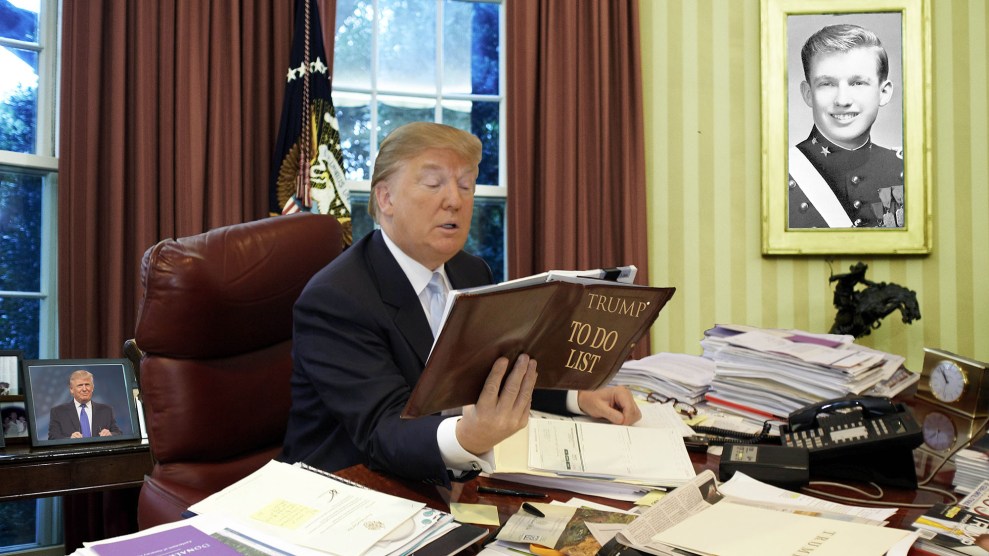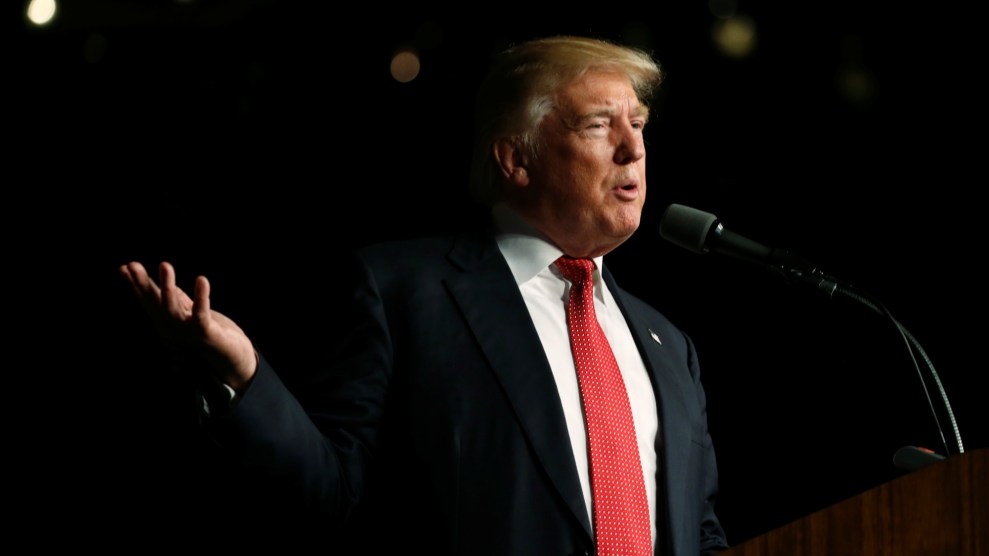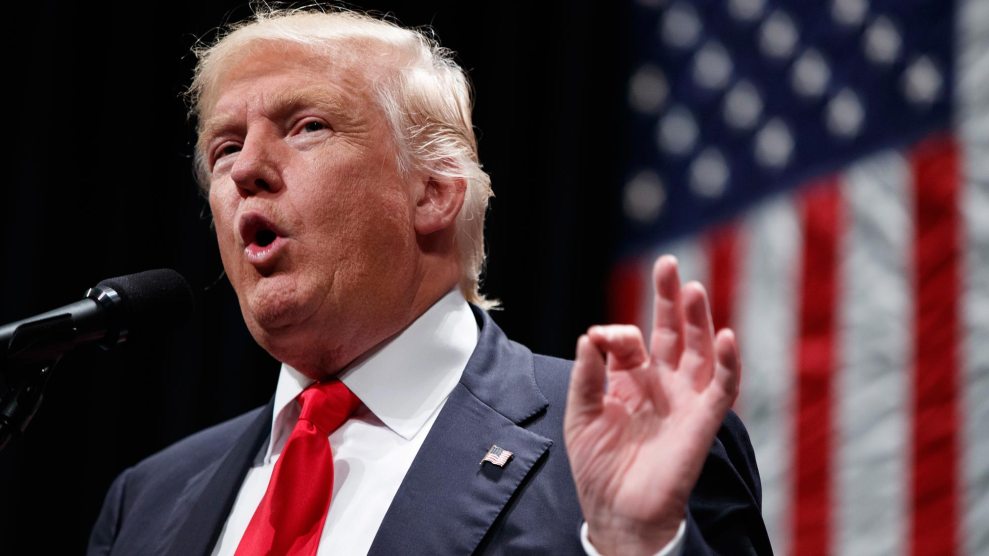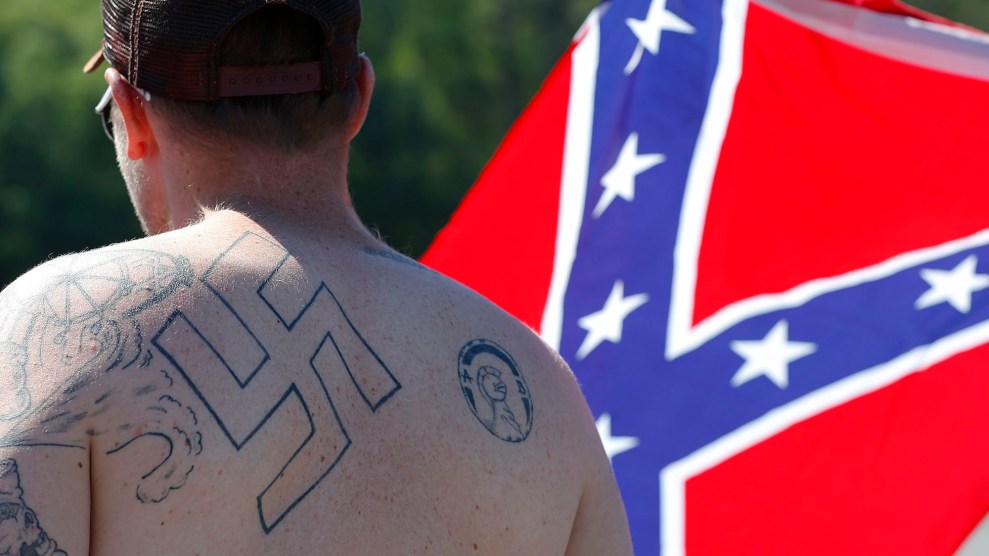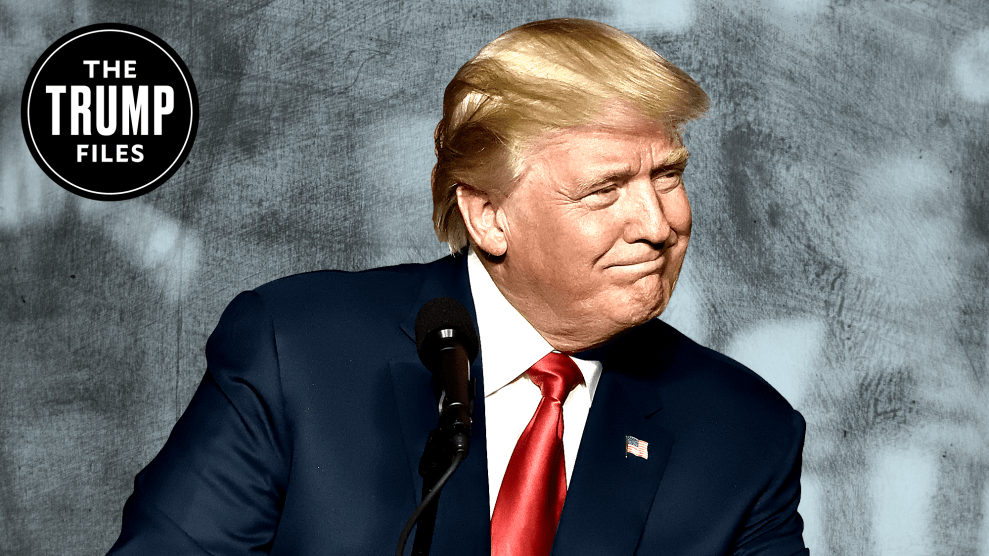
Mother Jones illustration; Shutterstock
This post was originally published as part of “The Trump Files“—a collection of telling episodes, strange but true stories, and curious scenes from the life of our current president—on September 30, 2016.
In 1995, five years after his business empire nearly collapsed under massive debt, Donald Trump was finally righting the ship. He’d sold off costly assets like his mega-yacht and money-losing airline, gone through two bankruptcies, and gotten debt relief by giving his creditors partial ownership of some of his properties. But the three casinos he still controlled—the Taj Mahal, the Trump Plaza, and the Trump Castle—were still deeply in debt.
So Trump figured out a way to erase that debt—at least for himself. He created Trump Hotels and Casino Resorts, a publicly traded company that operated the Trump Plaza. For about six months, it was a success. The company’s stock shot up from $14 to $35 a share, putting Trump back on the Forbes list of America’s 400 wealthiest people and helping him pay down $88 million of his personal debt, according to the Washington Post’s Michael Kranish and Marc Fisher in their book, Trump Revealed. “The IPO of Trump Hotels was what finally fueled Trump’s comeback,” wrote Fortune this March.
Then Trump sprung the trap. He used the company to buy the Taj Mahal and the Trump Castle, effectively purchasing the casinos from himself at a price that he set. “The company bought his Castle for $100 million more than analysts said it was worth,” the Post reported in June. “Trump pocketed $880,000 in cash after arranging the deal.” The two properties were also $1.7 billion in debt, and that debt suddenly belonged to Trump Hotels instead of Trump himself.
By the end of 1996, Trump Hotels stock was worth just $12. It eventually crashed down to 17 cents a share. “A shareholder who bought $100 of DJT [the company’s ticker symbol] shares in 1995 could sell them for about $4 in 2005,” Kranish and Fisher wrote. The company lost more than a billion dollars and filed for bankruptcy in 2004 and 2009. But even as its value collapsed over the years, the company paid Trump a total of $82 million by Fortune‘s estimate, covered the cost of entertaining his VIP guests, signed contracts to buy other Trump products, and even employed then-26-year-old Ivanka Trump on its board.
Donald and Ivanka resigned from the company’s leadership in 2009 in protest of the bondholders’ demands to go into Chapter 11 bankruptcy again. But despite making a killing while leaving his shareholders in the lurch, he doesn’t have any regrets. “All I can say is I wasn’t representing the country,” he told the Post. “I wasn’t representing the banks. I wasn’t representing anybody but myself.”

